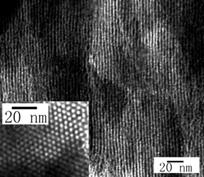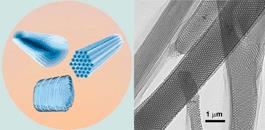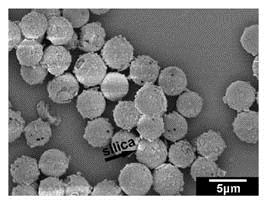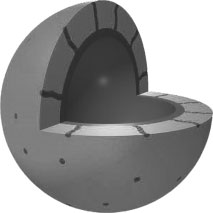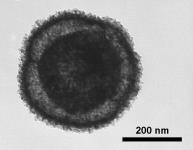 2005年论文
2005年论文
1. J. B. Pang, V. T. John, D. A. Loy, Z. Z. Yang, Y. F. Lu*, “Hierarchical mesoporous carbon/silica nanocomposites from phenyl-bridged organosilane”, Adv. Mater. 2005, 17, 704-707.
Mesoporous carbon/silica nanocomposites have been synthesized by carbonization of an ordered mesostructured phenylene/silica hybrid with both meso- and molecular-scale ordering.
2. D. H. Wang, R. Kou, Z. L. Yang, J. B. He, Z. Z. Yang*, Y. F. Lu*, “Hierarchical mesoporous silica wires by confined assembly”, Chem. Commun. 2005, 2, 166-167.
The assembly of silicate and surfactant confined within cylindrical alumina pore channels results in circular hexagonal, concentric lamellar and other unique mesostructures.
3. H. S. Peng, J. Tang, J. B. Pang, D. Y. Chen, L. Yang, H. S. Ashbaugh, C. J. Brinker, Z. Z. Yang*, Y. F. Lu*, “Polydiacetylene/silica nanocomposites with tunable mesostructure and thermochromatism from diacetylenic assembling molecules”, J. Am. Chem. Soc. 2005, 127, 12782-12783.
Conjugated polydiacetylene (PDA)/silica nanocomposites with tunable mesostructures and reversible thermochromatism were synthesized through self-directed assembly of diacetylenic silanes.
4. X. Y. Liu, Z. W. Niu, H. F. Xu, M. L. Guo*, Z. Z. Yang*, “Crosslinkable composite spheres and capsules synthesized by heterocoagulation”, Macromol. Rapid Commun. 2005, 26, 1002-1007.
An SEM image of the PS/EP/silica (where the EP was crosslinked slowly) microspheres after the cores have been removed.
5. M. Yang, J. Ma, Z. W. Niu, X. C. Wang, H. F. Xu, W. Wei, Z. K. Meng, Y. F. Lu*, Z. B. Hu, Z. Z. Yang*, “Hollow latex cages templated synthesis of spheres with complex structure”, Adv. Funct. Mater. 2005, 15, 1523-1528.
Hollow latex cages (HLCs) are used as templates to fabricate composite hollow spheres with complex structures.
6. M. Yang, J. Ma, C. L. Zhang, Y. F. Lu*, Z. Z. Yang*, “General synthetic route toward functional hollow spheres with double-shelled structures”, Angew. Chem. Int. Ed. 2005, 44, 6727-6730.
Controlled sulfonation of polystyrene hollow spheres gives hydrophilic layers with sulfonic acid groups that allow the formation of a wide variety of functional composites.
